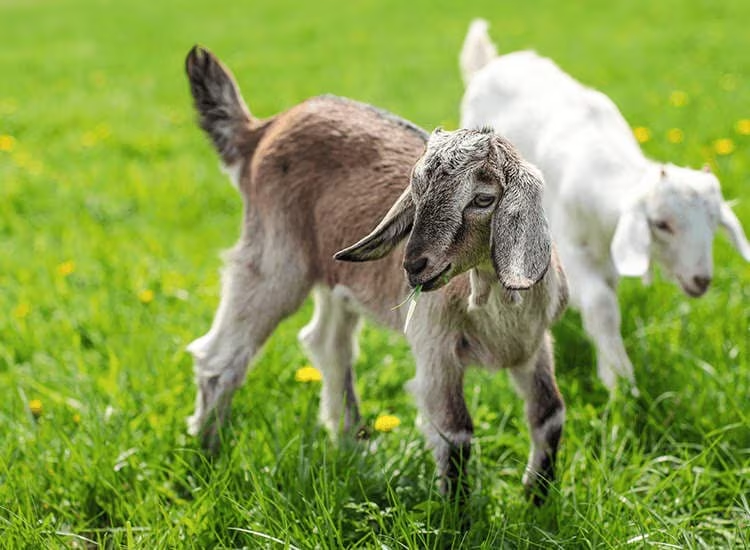Adding livestock to your homestead can transform it from a simple garden into a fully self-sustaining lifestyle. Chickens provide fresh eggs, goats supply milk and meat, and bees produce honey while pollinating your crops. This guide covers everything you need to know to start raising chickens, goats, and bees successfully on your homestead.
Why Livestock is Essential for a Productive Homestead

Raising livestock offers more than just food production. Chickens control pests and fertilize the soil, goats help clear weeds and provide dairy, and bees improve your harvest through pollination. Together, these animals create a balanced ecosystem on your land.
Benefits Beyond Food
- Income Source: Sell eggs, milk, cheese, and honey locally.
- Soil Improvement: Manure adds valuable nutrients back into the soil.
- Self-Sufficiency: Reduce dependence on store-bought products.
Raising Chickens for Eggs and Meat
Chickens are one of the easiest livestock options for beginners. They are low-maintenance, highly productive, and adaptable to different climates.
Choosing the Right Breed
Select breeds based on your needs. For eggs, try Rhode Island Reds or Leghorns. For meat, Cornish Cross is a popular choice. Dual-purpose breeds like Plymouth Rocks give you both eggs and meat.
Coop Requirements
A safe, well-ventilated coop is essential. Ensure each chicken has at least 2–3 square feet indoors and 8–10 square feet in the outdoor run. Protect them from predators with sturdy fencing.
Feeding and Care
Feed your chickens a balanced diet of commercial feed, supplemented with kitchen scraps and garden greens. Provide clean water daily and check for signs of illness.
Raising Goats for Milk, Meat, and Land Management
Goats are versatile animals that can thrive in various conditions. They are known for producing high-quality milk and clearing overgrown areas.
Choosing Dairy or Meat Breeds
For dairy, consider Nubians, Saanens, or Alpines. For meat, Boer goats are the most common. Some homesteaders keep smaller breeds like Nigerian Dwarfs for easier handling.
Housing and Fencing
Goats need shelter to protect them from rain, wind, and predators. Strong fencing is critical—goats are skilled escape artists. Use woven wire fencing at least 4 feet high.
Feeding and Health
Goats thrive on pasture but need hay during the winter or dry seasons. Provide mineral supplements and maintain regular health checks to prevent parasites and disease.
Beekeeping for Honey and Pollination
Bees are essential for a healthy homestead garden. They increase crop yields through pollination and produce honey, beeswax, and other products.
Setting Up a Beehive
Place your hive in a sunny location sheltered from strong winds. Ensure easy access for hive inspections and harvesting honey.
Beekeeping Equipment
You will need a hive box, frames, a bee suit, gloves, and a smoker to calm the bees during inspections.
Caring for Your Bees
Regularly check for pests such as Varroa mites, ensure the bees have enough food during winter, and harvest honey at the right time to leave enough for the colony.
Integrating Chickens, Goats, and Bees on One Homestead
With proper planning, all three can coexist on your homestead. Keep their housing and foraging areas separate to avoid cross-contamination and to meet each species’ needs.
Rotational Grazing
Use rotational grazing for goats to prevent overgrazing and allow pasture recovery. Chickens can follow goats to spread manure and control pests.
Shared Benefits
Bees benefit from the flowers and crops grown for livestock feed, while livestock benefit from improved crop pollination.
Maintaining a Balanced Homestead Ecosystem
Balancing livestock numbers with available resources is key. Start small and gradually expand as you gain experience and confidence.
Record Keeping
Track egg production, milk yield, and honey harvests. Keep records of breeding cycles, veterinary care, and feed costs.
Sustainable Practices
Compost manure, grow your own animal feed, and use natural pest control methods to reduce costs and environmental impact.
FAQs
1. How much space do I need for chickens, goats, and bees?
Chickens need 8–10 square feet per bird outdoors, goats require about 200–250 square feet each, and bees need minimal space for a hive.
2. Can goats and chickens share the same pasture?
Yes, but it’s best to separate them at night and provide species-specific feed to prevent nutritional imbalances.
3. How much time does daily care require?
Expect to spend about 30–60 minutes a day feeding, watering, cleaning, and checking on all animals.
4. Is beekeeping safe for beginners?
Yes, with proper gear and guidance. Many local beekeeping clubs offer training for new keepers.
5. What is the best way to start small?
Begin with a small flock of chickens, then add goats or bees once you are comfortable managing livestock.




